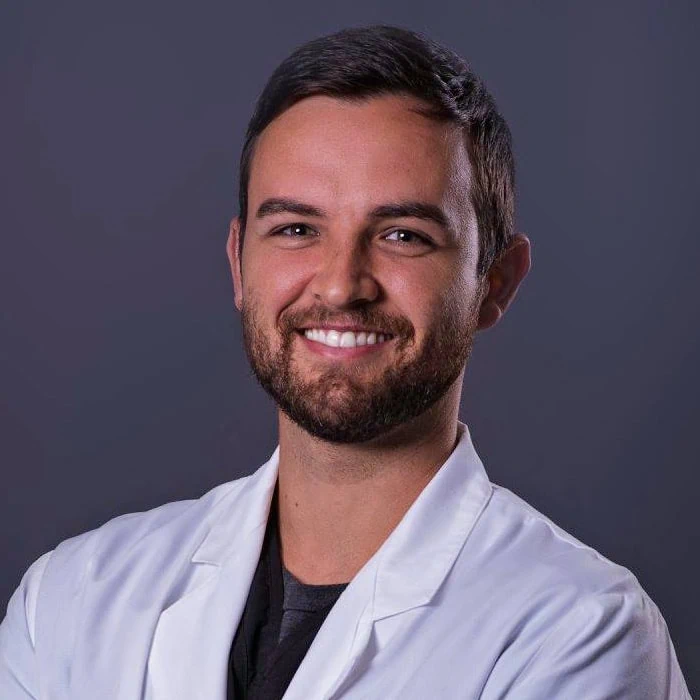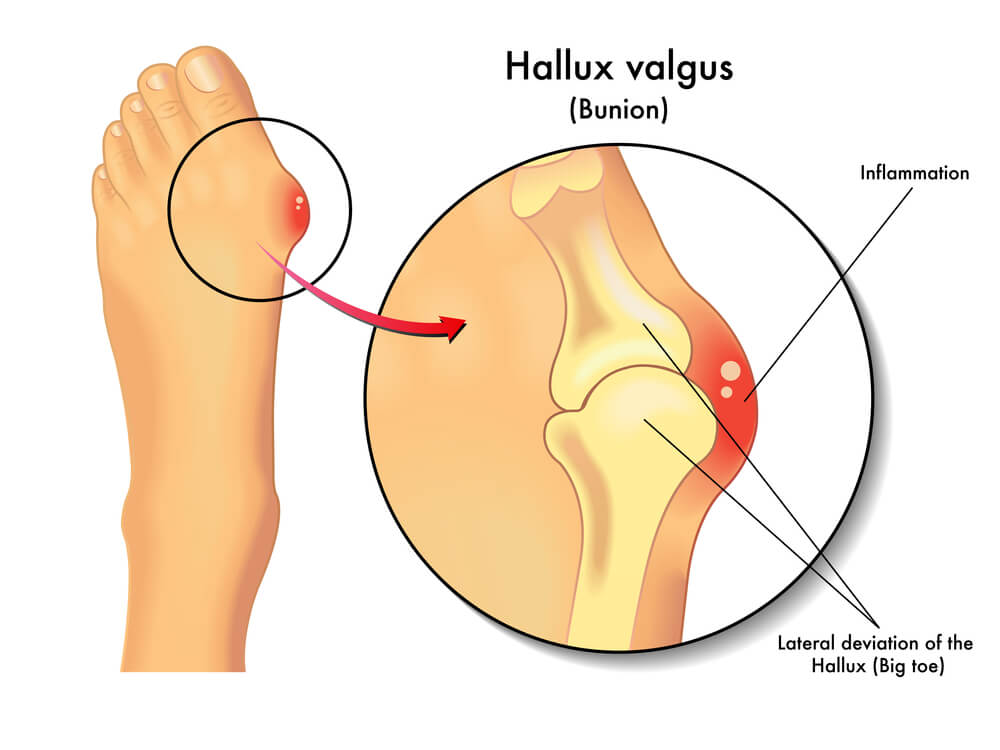Is A Curved Big Toe Hurting Your Foot Health? Here’s What You Should Know

Medically Reviewed By:
As people age, the big toe may begin to bend sideways, a condition that often goes unnoticed in its early stages. Over time, the curvature becomes more pronounced and can interfere with the foot’s function.. This seemingly small change can disrupt the balance and efficiency of the foot, emphasizing the big toe’s critical role in maintaining proper mobility.
A curved big toe may cause pain, difficulty wearing certain footwear, and challenges with activities such as walking. This can impair the ability to push off while walking, a primary function of the big toe, leading to overcompensation by the foot or ankle and increased stress on these areas.
Understanding what causes a bent big toe and exploring available solutions can help manage this condition effectively.
How Does A Big Toe Curved Inward Impact Mobility?
A curved big toe, medically known as hallux valgus, often indicates the early stages of arthritis in the metatarsophalangeal (MTP) joint at the toe’s base. Addressing hallux valgus early is essential to relieve discomfort and help slow the progression of arthritis, potentially reducing the risk of more severe complications.
If left untreated, hallux valgus can worsen and develop into hallux rigidus, a condition in which the toe becomes so stiff and arthritic that bending it is no longer possible. This loss of flexibility can significantly impact mobility, making walking, running, and other daily tasks increasingly difficult. Early intervention is essential to maintain toe movement and protect the joint from further damage.

Recognizing The Associated Signs And Symptoms
A bent big toe can lead to more than just discomfort. While pain is a common early symptom, other signs may indicate worsening issues with the toe joint and surrounding areas. These symptoms often develop gradually and, if left unaddressed, can significantly impact daily activities. Key indicators of a bent big toe include:
- Stiffness: Difficulty moving the toe, especially during walking or physical activity.
- Swelling: Inflammation around the joint, often accompanied by tenderness.
- Skin discoloration: Changes in skin tone near the affected area.
- Numbness: Tingling, numbness, or loss of sensation in the big toe due to pressure or nerve involvement.
- Limited range of motion: Reduced ability to bend or flex the toe, affecting mobility.
- Corns or calluses: Thickened skin resulting from friction as the misaligned toe rubs against footwear.
Common Causes Of An Inward Curving Big Toe
Several factors can lead to the development of a bent big toe. Understanding these factors is crucial for prevention and treatment, as addressing the underlying issues can help manage symptoms as well as reduce the risk of progression. Below are some of the most common contributors to an inward-curving big toe and their potential impacts.
Weak Foot Structure
A weak foot structure is a significant factor in the development of a bent big toe. This issue often arises from inherited traits, such as flat feet or overly flexible joints, which can compromise the foot’s stability over time. Without adequate support, the uneven distribution of weight and pressure during walking or standing may gradually cause the big toe to shift inward.
This instability can place strain on the MTP joint, potentially leading to discomfort, swelling, and reduced mobility.
Abnormalities In The Muscles And Tendons
Imbalances or abnormalities in the foot’s muscles and tendons can contribute to the development of a bent big toe. These structures are essential for maintaining proper alignment and movement of the toes. However, when certain muscles become too tight or weak or when tendons pull unevenly, the big toe may gradually deviate inward.
For instance, tight tendons on the inner side of the foot can pull the big toe toward the smaller toes, while weak stabilizing muscles may fail to support the joint, allowing it to collapse.
Foot Stress
Tight or short footwear can further increase stress by forcing the toes into unnatural positions. When shoes compress the forefoot, they disrupt muscle balance and increase the risk of deformities such as hammer toe, mallet toe, adductovarus toe, and an inward-curving big toe. Supportive footwear and proper biomechanics is key to preserving toe alignment.
Injuries
Trauma or injuries to the foot, especially involving the big toe joint, can contribute significantly to the development of an inward-curving big toe. Fractures, sprains, or repeated minor injuries may weaken the supporting structures of the toe, leading to instability and eventual misalignment.
Even after the initial injury heals, changes in joint mechanics can leave the big toe vulnerable to further strain. This vulnerability can result in a gradual inward shift, particularly if the injury impacts the tendons or ligaments responsible for maintaining proper alignment.
Bunions
Bunions are a frequent result of an inward-curving big toe. They result from a misalignment of the MTP joint at the base of the toe. Over time, this misalignment leads to the development of a bony bump on the side of the foot, which pushes the big toe inward toward the smaller toes.
The development of bunions is often associated with genetic predisposition, wearing tight or high-heeled shoes, or underlying foot conditions such as flat feet. As the bunion progresses, it can result in pain, swelling, and difficulty walking, which may further contribute to the curvature of the big toe and reduce overall mobility.
Underlying Medical Conditions
Certain health conditions can contribute to a bent big toe by affecting the joints, tissues, or overall structure of the foot. These conditions may cause inflammation, weaken the toe’s support system, or disrupt normal foot mechanics, gradually leading to misalignment. Below are some common health conditions that can increase the risk of an inward-curving big toe:
- Rheumatoid Arthritis: This autoimmune condition causes joint inflammation, resulting in swelling, pain, and deformity in the big toe, which often contributes to an inward curve over time.
- Ehlers-Danlos Syndrome (EDS): Ehlers-Danlos Syndrome (EDS) is a group of connective tissue disorders that affect skin, joints, and blood vessels. It may cause joint hypermobility, skin fragility, and chronic pain, increasing the risk of injuries and joint instability. Symptoms vary based on the type of EDS. Read More About Ehlers-Danlos Syndrome.
Joint hypermobility associated with EDS can weaken the stabilizing structures around the big toe, including the ligaments and tendons that maintain proper alignment. Over time, this instability may lead to deformities such as hallux valgus, in which the big toe gradually shifts inward because of unbalanced forces across the metatarsophalangeal joint.
Diagnosing Big Toe Misalignment And Deformity
Diagnosing a big toe misalignment or deformity usually involves a physical exam and diagnostic imaging. During the examination, a physician evaluates the toe’s alignment, range of motion, and any signs of swelling, redness, or tenderness in the joint. The physician may also assess how the condition affects walking patterns and overall foot function.
Imaging tests are commonly used to confirm the diagnosis and assess the severity of the misalignment. X-rays provide detailed views of the bone structure and joint alignment, aiding in identifying underlying conditions such as arthritis or damage to the MTP joint. In some cases, advanced imaging techniques like MRI or ultrasound may be recommended to evaluate soft tissue involvement.
Early diagnosis is important for managing symptoms and preventing the progression of toe deformities. Timely treatment can help improve mobility and alleviate discomfort, ensuring better outcomes for long-term foot health.
Conventional Treatment Options
Conventional approaches to managing a bent toe focus on alleviating symptoms such as pain and discomfort rather than directly addressing the underlying structural causes of the condition. These treatments aim to improve mobility, enhance daily comfort, and slow the progression of the misalignment, but may not fully correct the deformity.
Although these methods can provide temporary relief, they often serve as tools for symptom management rather than permanent solutions. Below are some commonly used conventional treatments:
- RICE method: Rest, ice, compression, and elevation help reduce swelling and pain, temporarily relieving symptoms associated with big toe misalignment. A recent study suggests that frequent icing may slow the healing process by limiting the delivery of important healing factors to the injured area.
- Bunion pads: Cushioned pads placed over bunions minimize pressure and friction, offering added comfort during daily activities.
- Medications: NSAIDs and opioids are often prescribed to manage pain and inflammation caused by big toe misalignment. While NSAIDs can reduce swelling and discomfort, they carry potential risks, including heart attack, stroke, and gastrointestinal bleeding. Opioids may be prescribed for severe pain but come with significant risks, such as addiction and overdose.
- Steroid shots: Steroid injections deliver anti-inflammatory medication directly into the big toe joint to reduce swelling and pain. While these injections offer temporary relief, they may damage cartilage over time, potentially worsening arthritis in the joint.
- Metatarsophalangeal (MTP) joint fusion: MTP joint fusion is a surgical procedure to address severe arthritis or hallux rigidus in the big toe. The procedure involves permanently fusing the joint using screws or plates, eliminating movement and pain. However, it can transfer stress to the ankle and surrounding toe joints, potentially leading to additional complications over time.
Tips For Preventing Bent Big Toe Progression
Taking proactive steps can help slow or even prevent the progression of a bent big toe. Below are practical tips recommended by experts to support foot alignment and overall health:
- Check your shoe wear patterns: Uneven wear on the outside edges of your shoes may indicate improper foot mechanics, potentially contributing to the bending of the big toe joint. Custom orthotics can help redistribute pressure, improve foot alignment, and reduce strain on the affected area.
- Choose foot-friendly shoes: Select shoes with a wide toe box and adequate arch support to avoid forcing the big toe into a bent position. High heels and pointy-toed shoes should be avoided as they can worsen misalignment and increase strain on the big toe joint.
- Use a toe straightener: Toe straighteners are devices designed to gently realign a bent big toe during sleep. These tools apply gradual corrective pressure and may help reduce misalignment over time.
- Consider supplements for joint health: Supplements like chondroitin and glucosamine may alleviate pain and help preserve cartilage in the big toe joint. Curcumin, a natural anti-inflammatory compound, can also support joint health and reduce arthritis-related pain.
Address Big Toe Pain With Regenexx Solutions
Physicians in the licensed Regenexx network offer non-surgical options to help support joint health and manage discomfort in the foot and toes. Procedures using Regenexx lab processes include PRP (platelet-rich plasma) injections and bone marrow concentrate (BMC) injectates, and are designed to support the body’s natural healing processes and may help improve mobility without the need for invasive surgery..
These procedures are delivered using advanced imaging guidance to help ensure precise placement in the targeted area. By concentrating biologic materials at the site of discomfort, these treatments aim to support tissue health and function in the big toe and surrounding joints..
Consulting a physician in the licensed Regenexx network can help determine if a customized, non-surgical option is appropriate for addressing big toe discomfort and supporting overall foot function.

Medically Reviewed By:
